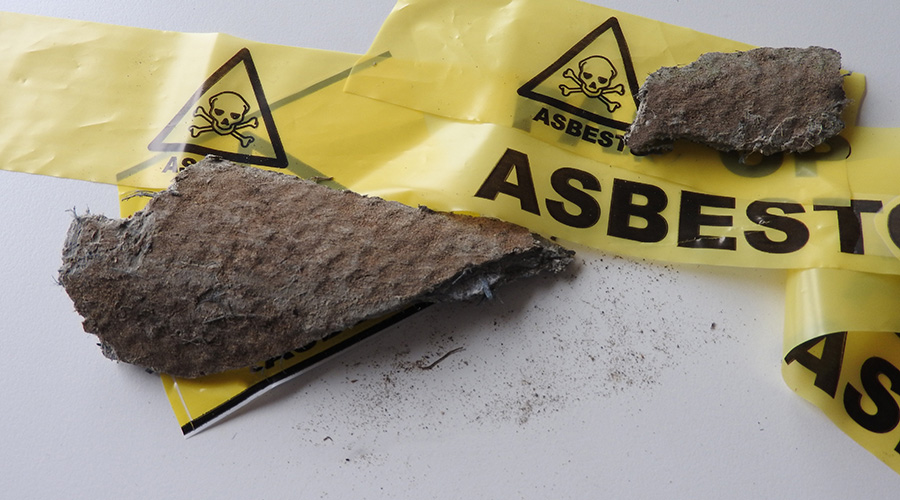Beyond the Ban: The Enduring Dangers of Asbestos Exposure in Facilities Today
The EPA’s asbestos ban was a significant victory, but the fight is far from over. Here’s what you need to know about the current state of asbestos litigation.
By Justinian C. Lane, Esq., Contributing Writer
In a landmark victory for public health, the Environmental Protection Agency (EPA) finally enacted a comprehensive ban on asbestos in the United States in March, 2024. This long-overdue action was hailed as a critical step in protecting workers, families, and communities from the devastating consequences of asbestos exposure.
However, the reality is that the dangers of asbestos continue to lurk in facilities and buildings across the country, posing an ongoing threat that demands our urgent attention.
Why is this important for facility managers to be aware of? A primary reason is that asbestos-related health problems can take 20 to 50 years to appear. Occupants or employees who were exposed to asbestos before the ban or during facility renovations in the past may only now be seeing symptoms. In addition to the significant health concerns, this puts facility owners and managers at potential risk for legal liabilities or litigation for negligence or violating regulations.
Understanding the scope of the ban, though, may also reveal its limitations in addressing workers’ health.
The Limitations of the Asbestos Ban
While the EPA’s recent asbestos ban represents a significant milestone, it is not a panacea for the widespread and deeply rooted problem of asbestos contamination. The new regulations only address the future use and import of asbestos, leaving a vast legacy of the material already embedded in the infrastructure of older buildings and facilities.
Asbestos was once celebrated as a miracle material, prized for its exceptional insulating and fireproofing properties. Its use grew exponentially through the 20th century, finding its way into a vast array of construction materials, from insulation and roofing to floor tiles and wallboard.
Factories, refineries, warehouses, and other industrial facilities were particularly vulnerable, as asbestos was ubiquitous in the equipment, machinery, and building materials used in these environments. The health hazards of asbestos, however, soon became undeniable. Exposure to the tiny, microscopic fibers can lead to devastating respiratory diseases, including the fatal cancer mesothelioma.
As the truth about asbestos came to light, regulations were gradually introduced, such as the Occupational Safety and Health Administration (OSHA) standards in the 1970s. But the damage had already been done, with facility workers and their families unknowingly exposed to this silent killer.
Asbestos in Buildings - An Ongoing Threat
The EPA's recent ban on asbestos has captured the public's attention, but the reality is that the material remains entrenched in the very fabric of our built environment. A 2022 study by Researchscape found that an alarming 38 percent of Americans have been exposed to asbestos in high-risk industries, while an even more disturbing 47 percent have experienced secondhand exposure through family members who unknowingly brought microscopic asbestos fibers home on their clothing.
The threat extends far beyond individual workers and their families. A concerning CDC report from 2022 revealed a worrisome rise in cases of mesothelioma among housewives, underscoring the insidious nature of asbestos exposure and its ability to impact even those not directly involved in high-risk occupations.
The Legacy of Asbestos- Ongoing Danger in Older Facilities
The asbestos ban, while a critical step forward, has left a legacy of the material in the walls, ceilings, and floors of countless facilities and buildings across the United States. This legacy poses a continuous threat, not only to the workers and occupants of these older structures but also to those involved in renovation and construction projects.
Asbestos is most dangerous when it becomes airborne, and demolition, renovation, or even routine maintenance can all release hazardous fibers, exposing facility occupants and workers to significant health risks. The consequences can be devastating, with the latency period for asbestos-related diseases, such as mesothelioma, often spanning decades.
In the face of this ongoing threat, it is essential that facility owners, managers, and workers embrace heightened vigilance when it comes to the detection and management of asbestos.
Comprehensive asbestos testing is a crucial first step, allowing for the identification of contaminated materials and the development of appropriate abatement strategies.
Asbestos abatement, conducted by certified professionals, is a complex and delicate process that requires meticulous attention to detail. Improper handling or disposal of asbestos-containing materials can lead to further exposure and environmental contamination, underscoring the critical importance of engaging qualified specialists.
Sustainable Approaches to Asbestos Removal and Disposal
As the legacy of asbestos continues to burden our built environment, the need for sustainable and environmentally-responsible approaches to removal and disposal has never been more pressing. Innovative technologies and techniques are emerging that aim to not only safely contain and remove asbestos but also to explore methods of detoxification and repurposing.
By embracing a comprehensive and proactive approach to asbestos management, facility owners and managers can play a crucial role in safeguarding the health and well-being of their workers, occupants, and the broader community. This includes implementing robust training programs, maintaining strict safety protocols, and exploring cutting-edge solutions for the responsible handling and disposal of asbestos-containing materials.
The enactment of the asbestos ban was a significant victory, but the war against this insidious material is far from over. The lingering presence of asbestos in our built environment, coupled with the latency of its associated diseases, underscores the urgent need for increased awareness and action.
Facility owners, managers, and workers must remain vigilant, embracing a culture of proactive testing, rigorous abatement procedures, and sustainable disposal practices. By doing so, they can help protect the health and safety of their employees, tenants, and the communities they serve, paving the way for a future free from the enduring dangers of asbestos exposure.
Justinian C. Lane, Esq. is an authority on asbestos and its long and complicated history. After losing his father and grandparents to asbestos-related cancers, Justinian dedicated his law practice to helping workers and families exposed to asbestos. He is completing a book on the history of industrial asbestos, and lessons it offers for confronting today's challenges.
Related Topics:












